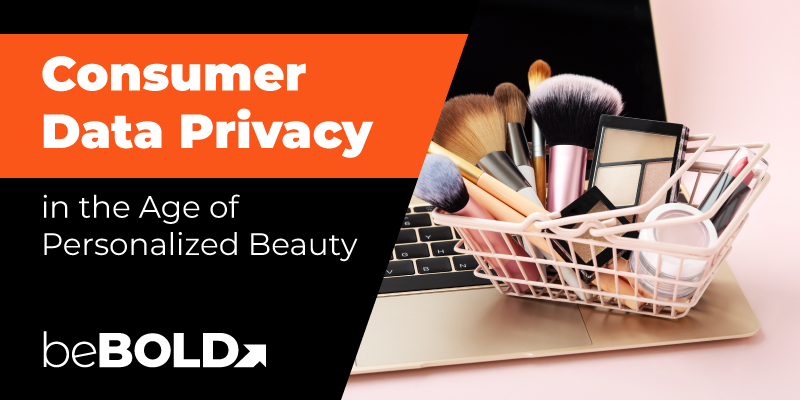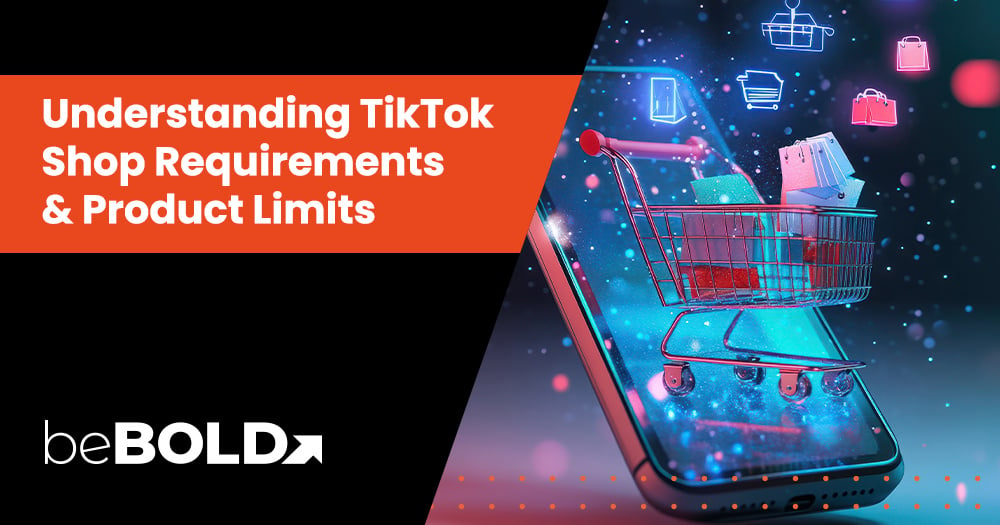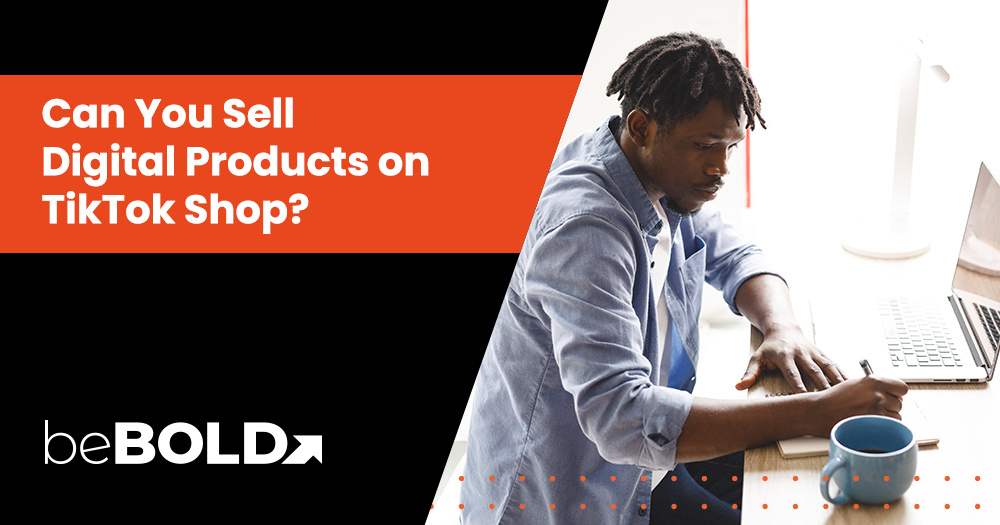It is time to say goodbye to one-size-fits-all beauty products. Today’s consumers want tailored recommendations, skincare routines, and even custom cosmetic formulations. To deliver this level of personalization, beauty companies collect detailed customer information, including skin type, concerns, lifestyle, and sometimes even genetic data.
While these details help create exceptional beauty experiences, they also raise significant privacy risks. Protecting data has become essential with high-profile data breaches and growing consumer awareness. It's not just about following regulations—it's about earning and maintaining customer trust.
This infographic will explore why data privacy is crucial in the personalized beauty industry.

What is the “Personalized Beauty” Trend?
Personalized beauty is a growing trend where beauty companies customize products and services to fit individual customer needs and preferences. By using customer data like age, gender, skin and hair type, purchase history, and feedback from virtual consultations or quizzes, beauty brands create tailored formulations and recommend personalized beauty routines.
Some factors that drive this trend include:
- Consumer demand
Seventy-five percent of shoppers are willing to pay more for beauty and skincare products that offer personalized online shopping experiences. They want solutions catered to their specific needs, such as finding the right foundation shade or skincare routine.
- Technological advancements
Innovations like AI and big data analytics enable beauty brands to gather and analyze customer data to enhance their products.
For instance, Estée Lauder’s privacy policy outlines its use of contact details, age, gender, and physical characteristics like skin and hair type to create personalized beauty products. The company has also partnered with Microsoft to enhance product development through AI and machine learning.
Benefits of Personalized Beauty for Consumers and Businesses
Personalized beauty benefits consumers and beauty businesses alike. Here’s how:
- For consumers
Personalized beauty caters to individual needs, resulting in better results for specific skin types, concerns, and preferences. With 18% of global beauty shoppers wanting good value for their money, personalized products reduce the risk of wasting money on unsuitable items.
- For businesses
Offering personalized beauty products helps brands stand out in an overly saturated market. This approach builds stronger customer relationships, leading to higher loyalty and repeat business.
Personalized Beauty Shopping Experiences: 5 Examples
Personalized beauty isn't just about the products; it's also about how customers buy them. Here are five ways this trend is transforming the shopping experience for beauty consumers.
1. Tailored skincare routines and product suggestions
Many beauty brands offer tailored skincare routines and product suggestions based on individual skin types and concerns.
One real-life example of this shopping experience is Amazon Beauty’s Skincare Advisor tool. This innovative tool uses AI and machine learning to analyze customer inputs, including skin concerns, skin type, and skincare goals. It then provides personalized product suggestions and tailored skincare routines that cater to individual needs.
2. Customizable beauty subscription boxes
Beauty subscription boxes have elevated personalization by allowing customers to complete detailed profiles. Instead of receiving a generic set of products each month, users receive a curated box full of products that are catered to their specific needs and preferences.
Beauty membership service Ipsy has this exact business model. They first ask subscribers to take a Beauty Quiz, then use the results to fill boxes with curated beauty products.
3. Virtual try-ons and augmented reality (AR) tools
Technology became crucial for online shopping when the COVID-19 pandemic kept people indoors. Virtual try-ons and AR tools now let customers see how makeup products like lipstick, eyeshadow, and foundation will look on their faces before buying.
In 2019, L’Oreal Amazon customers with the ability to digitally try on lipstick shades using their phone's front-facing camera. Today, Amazon continues to offer this virtual try-on option in its mobile app, allowing customers to visualize a wide range of products, from shoes to sunglasses, on themselves.
4. Online quizzes and AI-driven recommendations
Many beauty brands use online quizzes where customers answer questions about their skin type, concerns, preferences, and lifestyle. Based on their answers, AI algorithms suggest products that suit their needs. This experience makes the shopping process more fun and helps customers find products they might not have considered otherwise.
Take Ulta Beauty as an example. Its "Skincare Routine Quiz" asks users about their skin types, concerns, and goals, such as addressing dryness or acne. Then, it recommends the best skincare products for their situation.
5. In-store personalization kiosks and services
In physical stores, personalization kiosks and services let customers enter beauty-related data or complete a quick assessment to get personalized product recommendations.
That’s what Coty did with the Wella Professionals Smart Mirror, which uses AR to show how different hair colors and styles will look on clients in real time. The smart mirror also stores previous looks and color history, enhancing the personalized customer experience at salons.
Potential Risks Associated with Data Breaches
While exciting and convenient, personalized beauty poses risks to consumer data privacy. Here are some potential consequences of a data breach.
1. Financial loss and identity theft
A data breach can lead to large financial losses for both your business and customers. Hackers may gain access to sensitive personal information like credit card details and home addresses, leading to identity theft and financial fraud.
Victims may face unauthorized transactions, emptied bank accounts, and damaged financial records, which are often challenging and time-consuming to resolve.
2. Erosion of consumer trust and brand reputation
When customers share their personal information with you, they expect you to handle it securely. If this trust is broken, customers will likely take their business elsewhere.
The numbers don’t lie—studies show that 66% of consumers wouldn't trust a company with their data after a breach, and 44% believe cyber incidents are due to poor security measures.
Your reputation may suffer permanent harm, which could result in a drop in loyal customers and a decline in new customers.
3. Legal repercussions and fines
Given the repercussions of data breaches, the government has the right to penalize those who violate data privacy laws.
For example, the California Consumer Privacy Act (CCPA) allows consumers in the state to control their personal information and requires businesses to safeguard it. If you fail to do so, your customers may file a lawsuit for damages up to $750 per incident.
4. Disruption to business operations
After a data breach, you might need to temporarily shut down your systems to assess the damage and secure your network. This downtime can lead to lost sales, delays, and a weaker market position.
Moreover, recovering from a data breach demands significant resources, including investments in cybersecurity improvements, legal fees, and public relations efforts. This can strain your finances and divert attention from core business activities.
7 Best Practices for Safeguarding Consumer Data
Don’t wait for a data breach to happen to learn your lesson. Follow the tips below to honor consumer data privacy in the age of personalized beauty.
1. Implement robust data encryption and security
Encrypting data is one of the best ways to keep sensitive information safe. Even if someone intercepts the data, they can't read it because of this technology. To further deter cyber threats, you can install firewalls, antivirus software, and systems that detect intrusions.
Given the millions of users on its platform, Amazon implements robust security measures to protect customer details.
It encrypts Amazon customer data during transmission, conforms with the Payment Card Industry Data Security Standard (PCI DSS) for credit card handling, and offers comprehensive security settings so users can control their information.
2. Regularly update systems
Outdated software and systems are common entry points for cyberattacks. To minimize vulnerabilities, you must regularly update and patch all systems, applications, and devices.
Amazon devices automatically update to incorporate the latest security protections, safeguarding against new threats without needing user action. Amazon also uses Amazon Web Services (AWS) for cloud computing, which implements strong security measures suitable for sensitive organizations like the military and banks.
3. Practice regulatory compliance
Regulatory frameworks like the General Data Protection Regulation (GDPR) in Europe and the CCPA in the US set strict standards for handling, storing, and protecting personal data. Compliance with these regulations helps you avoid legal repercussions and builds consumer confidence in your brand.
Fortunately, Amazon already adheres to the following laws:
- California Privacy Rights Act (CPRA)
- Colorado Privacy Act (CPA)
- Oregon Consumer Privacy Act (OCPA)
This level of compliance protects Amazon's consumer data and sets a high standard for the e-commerce industry.
4. Train employees
Well-trained employees are your best defense against data breaches. So, teach them how to handle data securely, spot phishing attempts, and report suspicious activity.
For instance, encourage them to update their passwords regularly. You can also train them to recognize phishing emails or messages that may attempt to trick them into providing sensitive information.
5. Maintain transparency in data policies
Clearly communicate your data collection and usage policies to your customers. Inform them about the data you collect, how you plan to use it, and with whom it may be shared. This transparency fosters consumer confidence in sharing personal data and ensures they understand its handling.
Take inspiration from Amazon’s data privacy measures: its Privacy Notice details how personal data is collected, used, and shared. Additionally, Amazon’s Alexa Privacy Hub consolidates privacy settings and provides clear information on the operation of Alexa and Echo devices.
These measures ensure data privacy on Amazon, whether on the marketplace or any of its devices.
6. Obtain explicit consent
Getting clear consent from consumers before collecting their data is a legal requirement and a best practice for building trust. Ensure your consent forms are simple and understandable, and let consumers choose whether to allow or deny data collection. This way, you respect their choices and avoid legal problems.
7. Conduct regular audits
As technology evolves, so do hackers and their schemes. Regularly assess your data privacy measures to ensure compliance with relevant regulations and identify areas of improvement.
Conducting regular audits lets you review and update your data privacy policies and procedures, ensuring they remain effective in a constantly changing digital landscape.
An Amazon management agency can help you with this. They have the knowledge, tools, and experience to assess your security measures and provide recommendations for improvement.
Personalized Experiences, Powerful Results
Personalized beauty is revolutionizing the industry, offering a win-win for consumers and businesses. However, increased data collection brings the responsibility of ensuring data privacy. Implement the best practices mentioned above to protect customer information and build trust.
Need help navigating Amazon's beauty landscape? BeBOLD Digital, a full-service global Amazon agency, empowers brands like yours on their e-commerce journey. We offer comprehensive marketing and automation solutions to maximize your reach and revenue.
Contact us today to learn more.







Comments